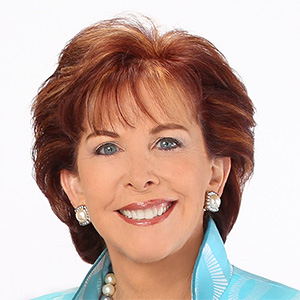Business
/ArcaMax

Tesla readies robotaxis in overdue step toward Musk dream
Tesla Inc. plans to roll out its first robotaxis on the streets of Austin Sunday afternoon after almost a decade of hype from Elon Musk, kicking off a precarious new era for the carmaker.
The chief executive officer said initial users would pay a $4.20 flat rate for the driverless trips, which will be limited to certain areas of the city. Tesla...Read more

NYC sets smaller driver pay bump after Uber, Lyft pushback
New York City on Friday announced new minimum-pay rules for rideshare drivers, settling on a smaller-than-proposed 5% increase following pushback from Uber Technologies Inc. and Lyft Inc.
An earlier proposal called for a 6.1% pay boost. The finalized regulations from the city’s Taxi and Limousine Commission, or TLC, are also designed to ...Read more

Econometer: Should the US ban drug advertising to consumers?
The U.S. is rare among Western nations because it allows pharmaceutical advertising. But a new effort aims to stop it.
A bill was introduced in Congress recently that would ban pharmaceutical manufacturers from using direct-to-consumer advertising, from TV to social media, to promote their products.
Prescription drug advertising employs a lot ...Read more

How Five Below used AI to target tweens and cut costs
Five Below, the Philadelphia-based chain with 1,800 stores that target middle schoolers and other young people, is in recovery, with sales growth and share price rebounding after a tough year.
Invent.ai, a 200-person Philadelphia software developer that uses artificial intelligence to automate product and inventory strategies, is taking some of...Read more

Michael Hiltzik: Social Security is still in good shape but faces challenges -- from Trump
The annual reports of the Social Security and Medicare trustees provide yearly opportunities for misunderstandings by politicians, the media, and the general public about the health of these programs. This year is no exception.
A case in point is the response by House Budget Committee Chairman Jodey Arrington, R-Texas, to the Social Security ...Read more

Boeing 'ready to listen' as world waits to hear Air India crash cause
Le BOURGET, France — Boeing kept a low profile at this year's Paris Air Show, an industry event where aerospace giants gather to discuss, showcase and strategize the future of flying.
But the airplane manufacturer was still top of mind. A 787 crash that left hundreds dead just days before the trade show was a solemn reminder of safety's ...Read more

Tesla to launch robotaxi service as Detroit moves on
Tesla Inc. CEO Elon Musk says the electric vehicle maker tentatively plans this weekend to launch its robotaxi service — a business Detroit basically abandoned.
Proving the ability of its vehicles to become driverless cabs is critical to Tesla's high-valuation future, according to experts, as its automotive business faces challenges from ...Read more

Union presses California's key bird flu testing lab for records
The union representing workers at a University of California-Davis lab that tests and tracks bird flu infections in livestock has sued the university, demanding that records showing staffing levels and other information about the lab's operations be released to the public.
Workers in the lab's small biotechnology department had raised concerns ...Read more

Auto review: 2025 Cadillac Optiq is the optimal luxury electric SUV
There’s a perception that everything is bigger in America, and it's hard to dispute. Generous proportions have always been an American automotive hallmark. Large size is certainly embedded in Cadillac’s DNA, and that's how its devotees like it — mostly. There are those abhor massiveness yet still desire the luxury, options and agility that...Read more

Upstart prediction market leader has invaded sports betting. Here's why it matters to Nevada
Nevada’s gaming companies have invested millions of dollars in their sportsbooks since casinos took their first sports wagers in 1949.
Betting on sports and racing is widely viewed in the industry today as a means of getting customers through the doors to bet on other games of chance that are more profitable to casinos than sports bets or to ...Read more

Auto review: Massive Nissan Armada trades fire with Detroit mega-utes
FARMINGTON HILLS, Michigan — Where Titan failed, the Armada might break through.
Nissan has sent big truck-based warriors with fierce names into battle against Detroit’s formidable armies of full-size pickups and mega-utes. The Titan pickup finally waved the red flag after bashing its brains in against endless waves of Detroit 1500, 2500, ...Read more

Driverless disruption: Tech titans gird for robotaxi wars with new factory and territories
As three key players vie for dominance, the race to put driverless taxis on roads across the country is heating up.
Waymo, owned by Google's parent company Alphabet, already offers paid autonomous rides in a handful of cities, including San Francisco and Los Angeles. Amazon's robotaxi effort, known as Zoox, opened a new production facility in ...Read more

EV owners don't pay gas taxes. In Minnesota next year, they'll pay double or more to register their cars
Starting next year, Minnesota electric vehicle owners will have to pay at least double to register their EVs. Blame the change on their freedom from gas taxes.
A provision in the transportation bill that passed earlier this month raises the EV registration surcharge from $75 to at least $150. Drivers of plug-in-hybrids will also have to pay a ...Read more

Auto review: 2025 Lexus RX has the prescription that consumers deserve
In 2025, the wide array of SUVs on the market is astounding. Every manufacturer has a compact, a mid-size and a large SUV in on the market. Sometimes it seems that SUVs are all you see on the roads anymore.
In Grasso’s Garage, our passion for luxury SUVs is no secret, but they must include good pricing, quality, comfort and storage, not to ...Read more

Krispy Kreme begins notifying over 160,000 people affected by data breach
CHARLOTTE, North Carolina — Krispy Kreme has begun notifying over 160,000 people affected by a data breach last fall.
The doughnut giant is notifying people affected by the breach in November after completing a data review and investigation, Krispy Kreme said in a statement Thursday to The Charlotte Observer.
“We are notifying affected ...Read more

Toyota can't dodge suit over Atlanta man's keyless entry death, judge says
Toyota can’t gut a lawsuit alleging it is responsible for the fatal carbon monoxide poisoning of an Atlanta man who unwittingly left his 2017 Tacoma idling in his garage, having walked inside his home with the car’s “smart key” fob, a federal judge in Atlanta ruled Wednesday.
U.S. District Judge Thomas Thrash Jr. said a jury should ...Read more

Belk hit with pair of lawsuits over data breach and notification failure
Two lawsuits were filed this week in federal court against Belk for a data breach and then for allegedly concealing the cyberattack.
In both cases, the plaintiffs are also seeking certification for class-action suits.
Belk failed to protect sensitive personal current and former employee and customer information, according to the lawsuits, and ...Read more

Zillow says it's fighting for buyers. Compass says it's fighting for sellers. What if neither is fighting for you?
As two real estate giants escalate a war over how homes should be listed for sale online, both sides say they’re acting in the interest of consumers.
Both sides also stand to make a lot of money if they win.
The issue intensified at the end of 2024, when Compass, the country’s largest brokerage by sales volume, began advising its sellers ...Read more

Waymo robotaxi stopped illegally, passenger opened door and severely injured cyclist, lawsuit claims
SAN FRANCISCO — A woman severely hurt in a bicycle crash with a Waymo robotaxi is suing the company, claiming one of its vehicles pulled over in a no-stopping zone next to a bike lane, and a passenger opened a door into her path — despite the car’s “Safe Exit” system touted by the Mountain View company as protection for passing ...Read more

Minnesota's Hormel sues Wisconsin's Johnsonville alleging stolen sausage secrets
A former Hormel Foods employee made off with top-secret sausage recipes and market intel before joining regional competitor Johnsonville, a new federal lawsuit alleges.
The Austin, Minnesota-based maker of breakfast sausage and more accused Johnsonville and two former Hormel employees of conspiring to “unlawfully obtain Hormel’s trade ...Read more
Popular Stories
- NYC sets smaller driver pay bump after Uber, Lyft pushback
- Michael Hiltzik: Social Security is still in good shape but faces challenges -- from Trump
- How Five Below used AI to target tweens and cut costs
- Econometer: Should the US ban drug advertising to consumers?
- Ford orders dealers not to deliver Mustang Mach-Es over lockout recall










